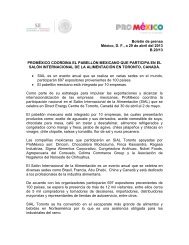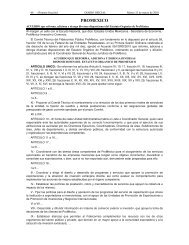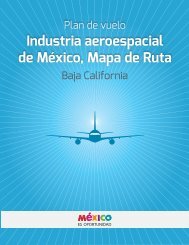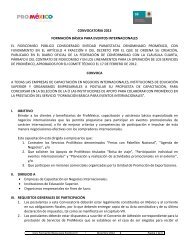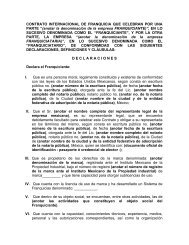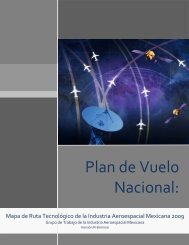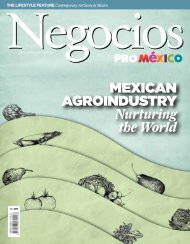AUTOMOTIVE IndUsTrY In MExIcO Ready to Overtake - ProMéxico
AUTOMOTIVE IndUsTrY In MExIcO Ready to Overtake - ProMéxico
AUTOMOTIVE IndUsTrY In MExIcO Ready to Overtake - ProMéxico
Create successful ePaper yourself
Turn your PDF publications into a flip-book with our unique Google optimized e-Paper software.
72 Negocios <strong>ProMéxico</strong> | The Lifestyle<br />
From BareFoot relay races<br />
<strong>to</strong> social Networks<br />
The zacahuil has over 6,000 followers on Facebook, illustrating the<br />
ground this Pre-Columbian delicacy has covered over the centuries.<br />
Loosely translating as ‘big bite’ or ‘corn husk in a basket’, the<br />
word zacahuil is derived from the indigenous languages of the<br />
Huastec Nahuas, To<strong>to</strong>nacos, Tepehuas and Téneeks. One of Mesoamerica’s<br />
main trade and migration routes crossed this region,<br />
which explains its rich and varied cuisine.<br />
Anthropological and gastronomic research has found similarities<br />
between the zacahuil and the mucbil, chicken tamale from the<br />
Yucatán Peninsula typically wrapped in heliconia or plantain<br />
leaves. Although not as big as the zacahuil, it is also made with a<br />
whole chicken and annat<strong>to</strong>, and is cooked in an underground earth<br />
oven, like the traditional cochinita pibil.<br />
the tamale Fair<br />
Every year since 1992, the National Museum of Popular Cultures has been<br />
organizing the Tamale Fair. If you visit Mexico City’s Coyoacán district in late<br />
January/early February, you will be able <strong>to</strong> sample tamales of every shape, size<br />
and flavor.<br />
The Mexican states of Chiapas, Morelos, Puebla, Oaxaca, Hidalgo, Yucatán,<br />
Michoacán, Veracruz, Guanajua<strong>to</strong>, Tamaulipas, Sonora, Tlaxcala, Coahuila,<br />
Estado de México and Mexico City have participated in 2012, along with Colombia,<br />
Venezuela, Honduras, Ecuador, El Salvador, Bolivia, Peru, Chile and<br />
Guatemala adding an international element.<br />
Corn, that humble plant sacred <strong>to</strong> Pre-Columbian culture, takes on multiple<br />
forms in this original tamale fest. So whether you prefer yours poblano,<br />
mazatec or ranchero-style; if corundas, uchepos or those magical bean pulacles<br />
are your weakness; if you like them filled with chipilín, hoja santa, corn, morita<br />
chili, black, red or yellow mole, there’s no beating the tamale of tamales, the<br />
zacahuil, that giant of the Huastec mountains and its close relative from Yucatán,<br />
the chicken mucbil, extracted steaming hot from the bowels of the earth.<br />
A firm believer in carrying on Mexico’s culinary traditions,<br />
Leticia Esquivel is a seasoned cook who has been making zacahuil<br />
for cultural events for 15 years. She herself was born in<br />
Mexico City, but learned the recipe from her husband, who is of<br />
Huastec origin.<br />
“Not many people are familiar with the xoco, which is a sweet<br />
version of the zacahuil. It has a firm texture and its ingredients<br />
couldn’t be more Pre-Columbian –it’s sweetened with raw sugar.<br />
The sweet xoco tamale is baked at the same time as the savory<br />
zacahuil, which is what gives it its distinctive flavor. I have been<br />
taking part in the Tamale Fair in Coyoacán, in Mexico City, for 15<br />
years and I know from experience that when people taste these<br />
unmistakably Mexican delicacies, they start <strong>to</strong> appreciate them.<br />
Before only the Huastecs knew about the zacahuil and now more<br />
and more people ask for it,” she says. n



